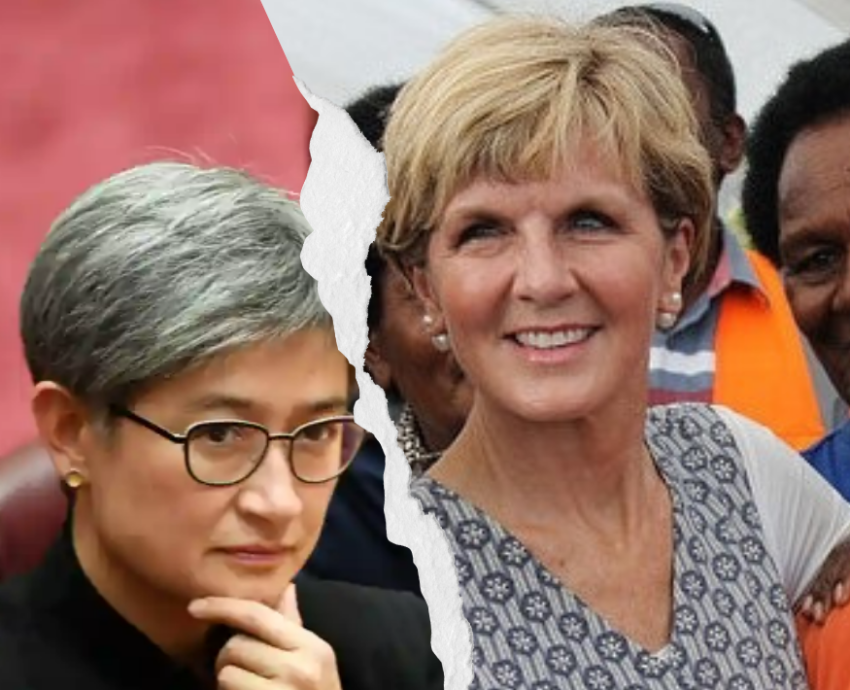
In the eyes of the United States and, by implication Australia, China has crossed some imaginary line by seeking to develop mutually advantageous relationships with Pacific Island nations.
New Labor foreign affairs minister Penny Wong has let it be known that any regional trade and security deal with China might well endanger the region’s peace and stability. While her language is less aggressive compared to the previous Coalition government, the message is the same: being a deputy sheriff to the US in the region is what matters.
Prime Minister Anthony Albanese has declared Australia had been the region’s “partner of choice” for many years and he intends to continue that. Then it was announced that 100 Australian military personnel will go to Papua New Guinea to “safeguard” their election from cyber interference.
Since China and the Solomon Islands signed a security agreement, the US and Australia have rushed to send envoys to tour the Pacific.
China sent its foreign minister Wang Yi to the Solomon Islands as part of a 10-day tour of the Pacific that included visits to Papua New Guinea, Kiribati, Samoa, Fiji, Tonga, Vanuatu and East Timor. China is pushing for a new regional security deal with 10 Pacific nations. The Associated Press, which has seen the draft agreement, reported that China wants to train police officers, team up on “traditional and non-traditional security” and expand law enforcement cooperation. In other words, it wants to do what Australia has been doing.
According to Wang Yi: “The framework agreement aims to support Solomon Islands to better safeguard its social security while also protecting the safety of Chinese citizens in Solomon Islands.” The Samoan government has announced it wants to develop closer bilateral relations with China.
Ignored by the West for decades, the Pacific Island nations are now part of the “family”. Canberra and Washington’s message is that the Pacific is “ours” and we will do as we wish.
At the Quad meeting in Tokyo and the earlier Association of South East Asian Nations meeting in Washington, US Secretary of State Antony Blinken left no room for doubt when he described China as “the most serious long-term challenge to the international order”.
Blinken said the US would defend and protect the rights of individuals and sovereign nations. If post-war history is any yardstick, that “defence” carries some huge caveats.
There are clear indications that the mood in the Pacific is swinging away from Australia.
This is despite the position taken by the President of the Federated States of Micronesia (FSM) David Penuelo who told the ABC on May 26 that the “Common Development Vision” deal with China would be a threat to the region’s security. The FSM is closely aligned to the US and is hardly representative of the views of all Pacific states.
According to the right-wing Australian Strategic Policy Institute (ASPI), China’s “end game is to push out US and allied interests, achieve regional hegemony, create vassal states, [and to] control access to supply chains”.
This might well be China’s “grand strategy” but it is a tactic and strategy that has been learned at the feet of the US — the biggest economic and coercive force the world has seen.
Hypocritically, ASPI views Chinese capitalism as predatory while the US’ is benign.
It is this capacity to misrepresent truth that allows the US and its allies to demonise its opponents by repeating the mantra that anything but subservience to the US undermines the international rules-based order.
This quickly becomes proof of a direct threat to “our” interests.
ASPI said the “draft regional agreement and Wang [Yi]’s visit are clearly part of a scaled-up effort towards Chinese regional hegemony and influence in critical economic and security sectors”.
It is a view of the world that cannot help but lead to conflict.
For the struggling nations of the Pacific, cooperation with China has much to recommend it. China is already the second biggest lender to the region and, prior to the current political fight, had committed US$169 million to the island states in untied aid and grants.
There is another factor that makes cooperation with China seem a logical option. The World Bank, Asian Development Bank and the US habitually link economic aid to governmental reforms that best suit the interests of the donors. Australia, has been criticised for politicising aid grants. China has, traditionally, been less inclined to do this.
Australia’s treatment of the region and its refusal to acknowledge Pacific nations’ appeals for climate action have damaged the relationship. Wong’s “no strings” approach to any new relationship needs to be proven in fact.